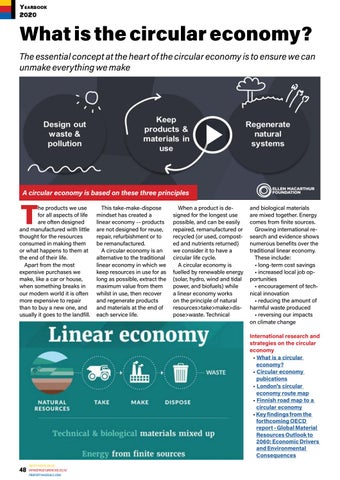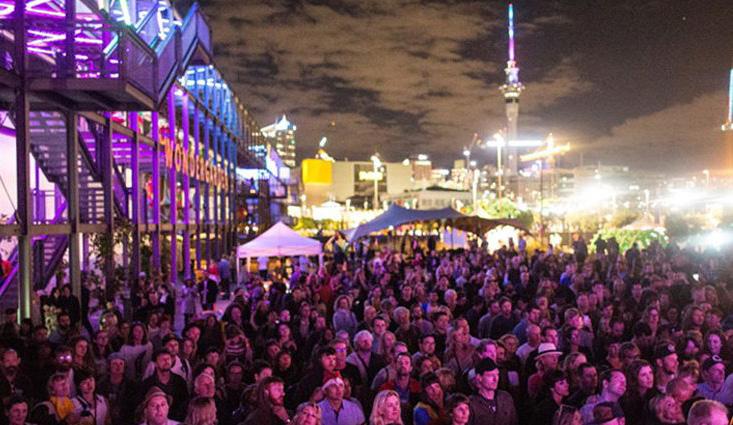Yearbook 2020
What is the circular economy? The essential concept at the heart of the circular economy is to ensure we can unmake everything we make
A circular economy is based on these three principles
T
he products we use for all aspects of life are often designed and manufactured with little thought for the resources consumed in making them or what happens to them at the end of their life. Apart from the most expensive purchases we make, like a car or house, when something breaks in our modern world it is often more expensive to repair than to buy a new one, and usually it goes to the landfill.
This take-make-dispose mindset has created a linear economy -- products are not designed for reuse, repair, refurbishment or to be remanufactured. A circular economy is an alternative to the traditional linear economy in which we keep resources in use for as long as possible, extract the maximum value from them whilst in use, then recover and regenerate products and materials at the end of each service life.
When a product is designed for the longest use possible, and can be easily repaired, remanufactured or recycled (or used, composted and nutrients returned) we consider it to have a circular life cycle. A circular economy is fuelled by renewable energy (solar, hydro, wind and tidal power, and biofuels) while a linear economy works on the principle of natural resources>take>make>dispose>waste. Technical
and biological materials are mixed together. Energy comes from finite sources. Growing international research and evidence shows numerous benefits over the traditional linear economy. These include: • long-term cost savings • increased local job opportunities • encouragement of technical innovation • reducing the amount of harmful waste produced • reversing our impacts on climate change International research and strategies on the circular economy • What is a circular economy? • Circular economy pubications • London's circular economy route map • Finnish road map to a circular economy • Key findings from the forthcoming OECD report - Global Material Resources Outlook to 2060: Economic Drivers and Environmental Consequences
48
safetynews.co.nz
infrastructurenews.co.nz propertyandbuild.com











